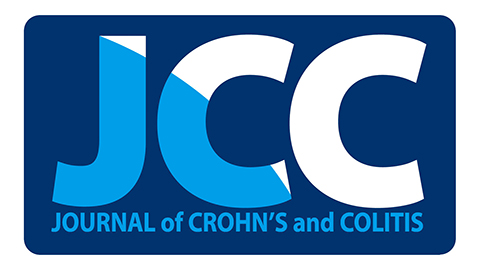
“The endocannabinoid system (ECS) is involved in a considerable number of physiological processes in the Central Nervous System.
Recently, a modulatory role of cannabinoid receptors (CBr) and CBr agonists on the reduction of the N-methyl-d-aspartate receptor (NMDAr) activation has been demonstrated. Quinolinic acid (QUIN), an endogenous analog of glutamate and excitotoxic metabolite produced in the kynurenine pathway (KP), selectively activates NMDAr and has been shown to participate in different neurodegenerative disorders.
Since the early pattern of toxicity exerted by this metabolite is relevant to explain the extent of damage that it can produce in the brain, in this work we investigated the effects of the synthetic CBr agonist WIN 55,212-2 (WIN) and other agonists (anandamide or AEA, and CP 55,940 or CP) on early markers of QUIN-induced toxicity in rat striatal cultured cells and rat brain synaptosomes.
WIN, AEA and CP exerted protective effects on the QUIN-induced loss of cell viability. WIN also preserved the immunofluorescent signals for neurons and CBr labeling that were decreased by QUIN. The QUIN-induced early mitochondrial dysfunction, lipid peroxidation and reactive oxygen species (ROS) formation were also partially or completely prevented by WIN pretreatment, but not when this CBr agonist was added simultaneously with QUIN to brain synaptosomes.
These findings support a neuroprotective and modulatory role of cannabinoids in the early toxic events elicited by agents inducing excitotoxic processes.”
https://www.ncbi.nlm.nih.gov/pubmed/25446347
https://www.sciencedirect.com/science/article/abs/pii/S0306452214009737?via%3Dihub





 “Cannabinoid-based interventions are being explored for central nervous system (CNS) pathologies such as neurodegeneration, demyelination, epilepsy, stroke, and trauma. As these disease states involve dysregulation of myelin integrity and/or remyelination, it is important to consider effects of the endocannabinoid system on oligodendrocytes and their precursors. In this review, we examine research reports on the effects of the endocannabinoid system (ECS) components on oligodendrocytes and their precursors, with a focus on therapeutic implications. Cannabinoid ligands and modulators of the endocannabinoid system promote cell signaling in oligodendrocyte precursor survival, proliferation, migration and differentiation, and mature oligodendrocyte survival and myelination. Agonist stimulation of oligodendrocyte precursor cells (OPCs) at both CB1 and CB2 receptors counter apoptotic processes via Akt/PI3K, and promote proliferation via Akt/mTOR and ERK pathways. CB1 receptors in radial glia promote proliferation and conversion to progenitors fated to become oligodendroglia, whereas CB2 receptors promote OPC migration in neonatal development. OPCs produce 2-arachidonoylglycerol (2-AG), stimulating cannabinoid receptor-mediated ERK pathways responsible for differentiation to arborized, myelin basic protein (MBP)-producing oligodendrocytes. In cell culture models of excitotoxicity, increased reactive oxygen species, and depolarization-dependent calcium influx, CB1 agonists improved viability of oligodendrocytes. In transient and permanent middle cerebral artery occlusion models of anoxic stroke, WIN55212-2 increased OPC proliferation and maturation to oligodendroglia, thereby reducing cerebral tissue damage. In several models of rodent encephalomyelitis, chronic treatment with cannabinoid agonists ameliorated the damage by promoting OPC survival and oligodendrocyte function. Pharmacotherapeutic strategies based upon ECS and oligodendrocyte production and survival should be considered.”
“Cannabinoid-based interventions are being explored for central nervous system (CNS) pathologies such as neurodegeneration, demyelination, epilepsy, stroke, and trauma. As these disease states involve dysregulation of myelin integrity and/or remyelination, it is important to consider effects of the endocannabinoid system on oligodendrocytes and their precursors. In this review, we examine research reports on the effects of the endocannabinoid system (ECS) components on oligodendrocytes and their precursors, with a focus on therapeutic implications. Cannabinoid ligands and modulators of the endocannabinoid system promote cell signaling in oligodendrocyte precursor survival, proliferation, migration and differentiation, and mature oligodendrocyte survival and myelination. Agonist stimulation of oligodendrocyte precursor cells (OPCs) at both CB1 and CB2 receptors counter apoptotic processes via Akt/PI3K, and promote proliferation via Akt/mTOR and ERK pathways. CB1 receptors in radial glia promote proliferation and conversion to progenitors fated to become oligodendroglia, whereas CB2 receptors promote OPC migration in neonatal development. OPCs produce 2-arachidonoylglycerol (2-AG), stimulating cannabinoid receptor-mediated ERK pathways responsible for differentiation to arborized, myelin basic protein (MBP)-producing oligodendrocytes. In cell culture models of excitotoxicity, increased reactive oxygen species, and depolarization-dependent calcium influx, CB1 agonists improved viability of oligodendrocytes. In transient and permanent middle cerebral artery occlusion models of anoxic stroke, WIN55212-2 increased OPC proliferation and maturation to oligodendroglia, thereby reducing cerebral tissue damage. In several models of rodent encephalomyelitis, chronic treatment with cannabinoid agonists ameliorated the damage by promoting OPC survival and oligodendrocyte function. Pharmacotherapeutic strategies based upon ECS and oligodendrocyte production and survival should be considered.”

